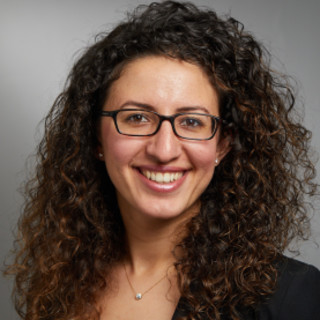Interdisciplinary collaboration is paramount to the nearly 10,000 heart and lung transplants performed worldwide annually. That was the unifying theme of this year’s International Society of Heart and Lung Transplantation (ISHLT) meeting. Held April 10–13 in Prague, the 44th Annual Meeting brought together international experts in pediatric and adult cardiology, pulmonology, anesthesiology, and cardiothoracic surgery.
Although I subspecialize in interventional cardiac imaging, the meeting was profoundly impactful on me. The review of current practices in heart transplantation was thorough, and the active research was intriguing. Together, they informed me about how to better counsel patients whom I refer to advanced heart failure specialists: to be able to give them a sense of the types of discussions to expect and answer their basic questions.
Among discussions featured at the meeting were those summarized below.
Advancing management of cardiogenic shock
Off the heels of the FDA recalling Impella instructions and the DaNGer SHOCK trial presented at the American College of Cardiology’s annual conference the week prior, temporary mechanical circulatory support (tMCS) weighed heavily on the minds of ISHLT attendees.
DaNGer SHOCK showed that, among STEMI patients in cardiogenic shock (CS), those placed on Abiomed’s Impella CP experienced a 26% lower likelihood of all-cause mortality after 180 days. At ISHLT, the conversation about Impella devices centered on a different population — those with decompensated heart failure as the cause of CS.
Included in this discussion was favorable data from the Cardiogenic Shock Working Group on patients with CS supported by Impella 5.0 or 5.5 devices. In-hospital survival was higher among those with CS from heart failure compared to acute coronary syndrome (72% vs. 54%, p<0.0001). Among survivors of CS supported with Impella, over two-thirds received heart replacement therapy, either an LVAD or heart transplant.
Dr. Koichiro Kinugawa presented an update to his case series from Toyama University Hospital in Japan, where Impella has been used to support transcatheter procedures in patients with heart failure-related CS. According to his center’s experience, Impella, in carefully selected cases, can facilitate transcatheter edge-to-edge repair (TEER) by unloading the ventricle and bringing together valve leaflets that otherwise poorly coapt. However, too much of a tethering force can result in the complication of single-leaflet device attachment.
The early feasibility study of a new Impella device was also mentioned. Impella BTR (bridge to recovery) holds the promise of providing up to 6 L/min of flow while being designed in such a way that patients can return home with the device for over a year. The study remains ongoing and is currently enrolling at Emory and Northwestern Hospitals.
Re-thinking the U.S. heart allocation policy
With the ever-increasing gap between the supply and demand of hearts available for transplantation, a perennial issue has been how to optimize the contemporary donor heart allocation policy.
In 2018, the United Network for Organ Sharing (UNOS) implemented a six-tier policy. It replaced the prior three-tier policy and stratified patients by the acuity of their illness in a more refined way, with the hopes of prioritizing sicker patients on the transplant waitlist. However, disparities remain and have been potentially exacerbated because of the updated policy. For example, with higher priority now being given to patients on tMCS, large hospital systems with extensive resources to support tMCS may preferentially receive donor hearts. Use of tMCS abruptly and substantially increased in the waitlist since 2018. Rather than reflecting the increased prevalence of disease, some experts raised concern that the uptick in tMCS might reflect a “gaming” of the system, by which devices that provide more support than necessary are implanted as a means of enhancing a patient’s priority on the waitlist.
Dr. Kiran Khush, a heart failure specialist at Stanford University, called for a more objective assessment of illness in the donor allocation policy that incorporates hemodynamic markers of disease. She spoke to a packed room about her research on differences between donor hearts accepted in North America and Europe. In collaboration with other researchers, her work determined that Europeans accept higher-risk and older donor hearts, alluding to how the U.S. could optimize its strategy.
New technologies for increasing the number of heart transplants
In recent years, the donor heart pool has expanded by including hearts donated after circulatory death (DCD). While, traditionally, donor hearts came from donation after brain death (DBD), the advent of newer technologies, including ex vivo perfusion techniques, allowed hearts to be preserved after cardiac arrest. Studies comparing DCD to DBD have shown no difference in six-month mortality rates between the techniques.
At ISHLT, researchers shared further data in support of DCD. Dr. Shivank Madan from Montefiore Medical Center provided early outcomes data from UNOS confirming no difference in six-month mortality rates of DCD versus DBD for multi-organ heart transplants. Cardiothoracic surgeons from the University of Virginia queried the UNOS database for patients with congenital heart disease. While long-term survival of DCD was comparable to DBD, they found that survival within the first 90 days was worse among patients undergoing DCD. Their findings underscored the need to study the perioperative period of DCD to be able to effectively utilize the expanded donor pool among patients with congenital heart disease.
Overall, ISHLT served both as a time to celebrate the huge progress already made in the fields of heart and lung transplantation and as a time to humbly reflect on the challenges ahead. With the rapid growth of new devices to provide mechanical support and preserve donor organs, the future of the field and its patients certainly looks bright.
Dr. Haghighat has no conflicts of interest to report.
Image: bro vector / gettyimages







